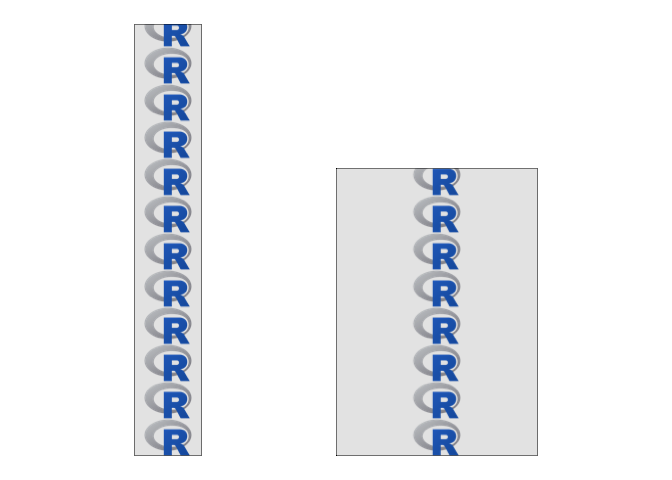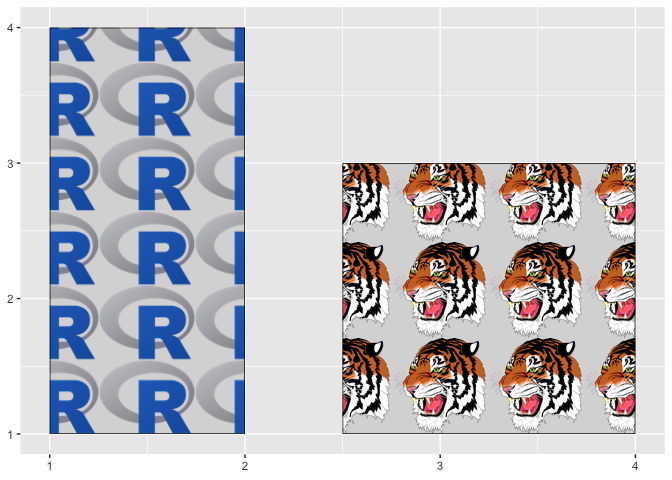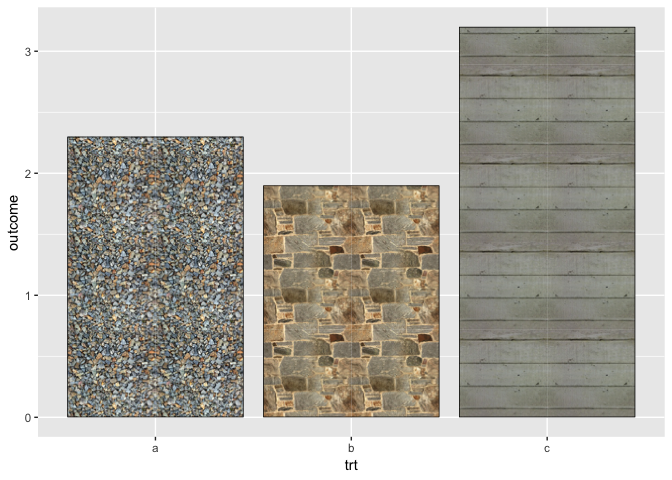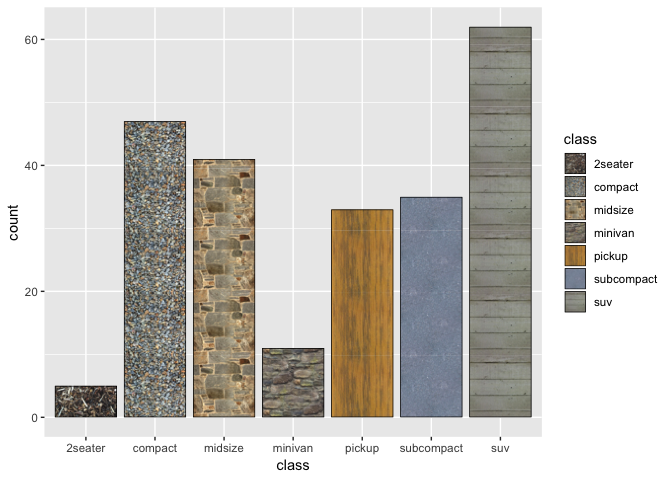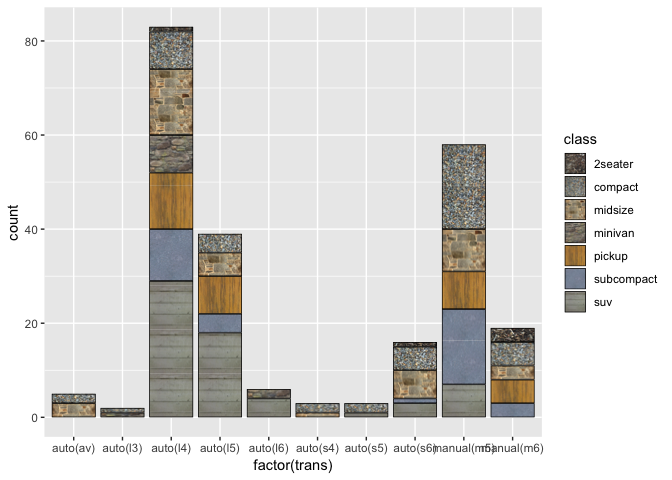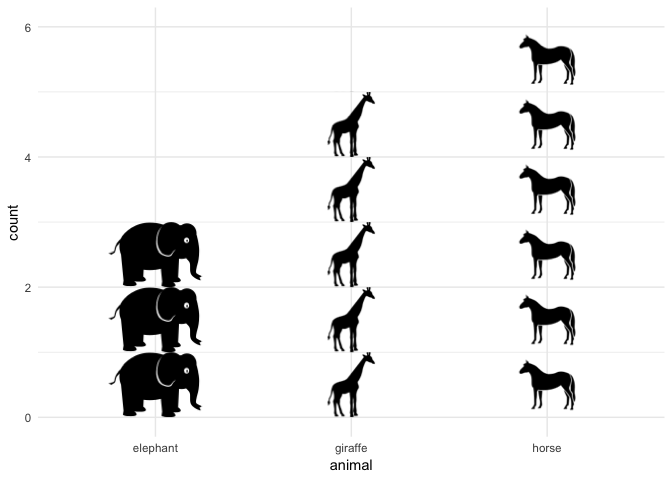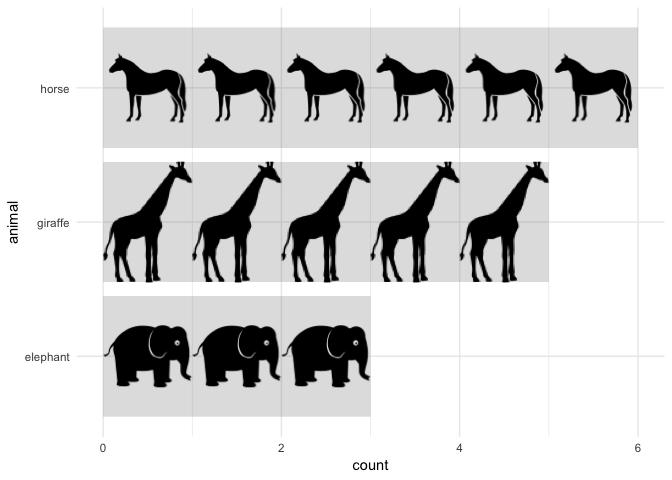Written by Claus O. Wilke
This package provides functions to draw textured rectangles and bars with the grid graphics system and with ggplot2.
Note: The package is at the stage of tech demo/proof of concept. It is not ready for production purposes.
Please install from github via:
devtools::install_github("clauswilke/ggtextures")Basic example of a textured rectangle drawn with grid:
library(ggtextures)
library(grid)
library(magick)
#> Linking to ImageMagick 6.9.9.39
#> Enabled features: cairo, fontconfig, freetype, lcms, pango, rsvg, webp
#> Disabled features: fftw, ghostscript, x11
img <- image_read("https://jeroen.github.io/images/Rlogo.png")
grid.newpage()
tg1 <- texture_grob(
img,
x = unit(.2, "npc"), y = unit(.05, "npc"),
width = unit(.1, "npc"), height = unit(.9, "npc"),
img_width = unit(.5, "in"), ncol = 1
)
tg2 <- texture_grob(
img,
x = unit(.5, "npc"), y = unit(.05, "npc"),
width = unit(.3, "npc"), height = unit(.6, "npc"),
img_width = unit(.5, "in"), ncol = 1
)
grid.draw(tg1)
grid.draw(tg2)This is a basic example of textured rectangles in ggplot2:
library(ggplot2)
library(tibble)
data <- tibble(
xmin = c(1, 2.5), ymin = c(1, 1), xmax = c(2, 4), ymax = c(4, 3),
image = list(
"https://jeroen.github.io/images/Rlogo.png",
image_read_svg("https://jeroen.github.io/images/tiger.svg")
)
)
ggplot(data, aes(xmin = xmin, xmax = xmax, ymin = ymin, ymax = ymax, image = image)) +
geom_textured_rect(img_width = unit(1, "in"))We can also make a textured equivalent to geom_col() or geom_bar():
df <- tibble(
trt = c("a", "b", "c"),
outcome = c(2.3, 1.9, 3.2),
image = c(
"http://www.hypergridbusiness.com/wp-content/uploads/2012/12/rocks2-256.jpg",
"http://www.hypergridbusiness.com/wp-content/uploads/2012/12/stone2-256.jpg",
"http://www.hypergridbusiness.com/wp-content/uploads/2012/12/siding1-256.jpg"
)
)
ggplot(df, aes(trt, outcome, image = image)) +
geom_textured_col(img_width = unit(0.5, "null"))images = c(
compact = "http://www.hypergridbusiness.com/wp-content/uploads/2012/12/rocks2-256.jpg",
midsize = "http://www.hypergridbusiness.com/wp-content/uploads/2012/12/stone2-256.jpg",
suv = "http://www.hypergridbusiness.com/wp-content/uploads/2012/12/siding1-256.jpg",
`2seater` = "http://www.hypergridbusiness.com/wp-content/uploads/2012/12/mulch1-256.jpg",
minivan = "http://www.hypergridbusiness.com/wp-content/uploads/2012/12/rocks1-256.jpg",
pickup = "http://www.hypergridbusiness.com/wp-content/uploads/2012/12/wood3-256.jpg",
subcompact = "http://www.hypergridbusiness.com/wp-content/uploads/2012/12/concrete1-256.jpg"
)
ggplot(mpg, aes(class, image = class)) +
geom_textured_bar() +
scale_image_manual(values = images)ggplot(mpg, aes(factor(trans), image = class)) +
geom_textured_bar() +
scale_image_manual(values = images)Isotype bars can be drawn with geom_isotype_bar() and
geom_isotype_col(). The units of the images are set as grid native
units. Default is that the image height corresponds to one data unit.
data <- tibble(
count = c(5, 3, 6),
animal = c("giraffe", "elephant", "horse"),
image = list(
image_read_svg("http://steveharoz.com/research/isotype/icons/giraffe.svg"),
image_read_svg("http://steveharoz.com/research/isotype/icons/elephant.svg"),
image_read_svg("http://steveharoz.com/research/isotype/icons/horse.svg")
)
)
ggplot(data, aes(animal, count, image = image)) +
geom_isotype_col() +
theme_minimal()ggplot(data, aes(animal, count, image = image)) +
geom_isotype_col(
img_width = grid::unit(1, "native"), img_height = NULL,
ncol = NA, nrow = 1, hjust = 0, vjust = 0.5, fill = "#80808040"
) +
coord_flip() +
theme_minimal()